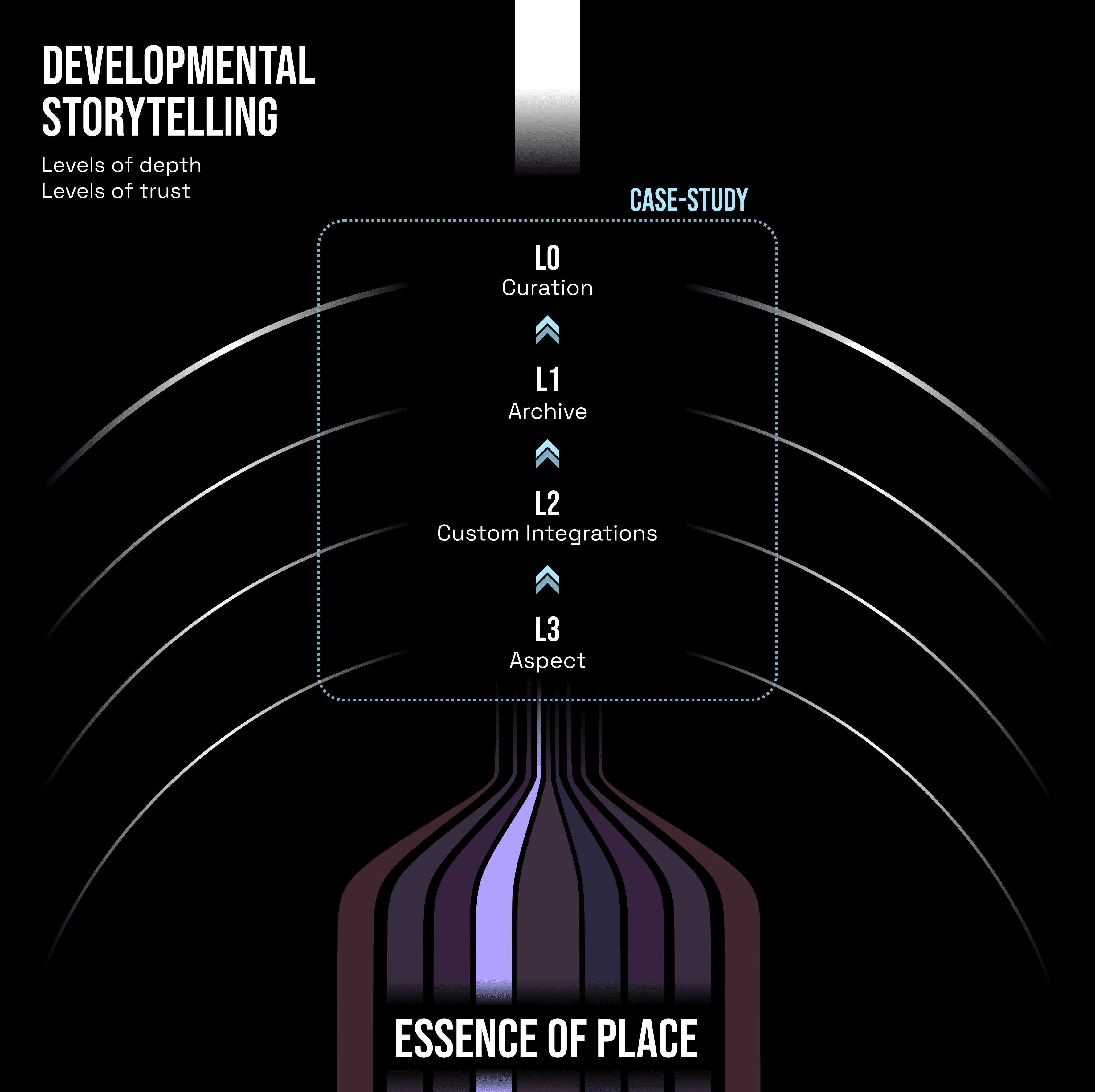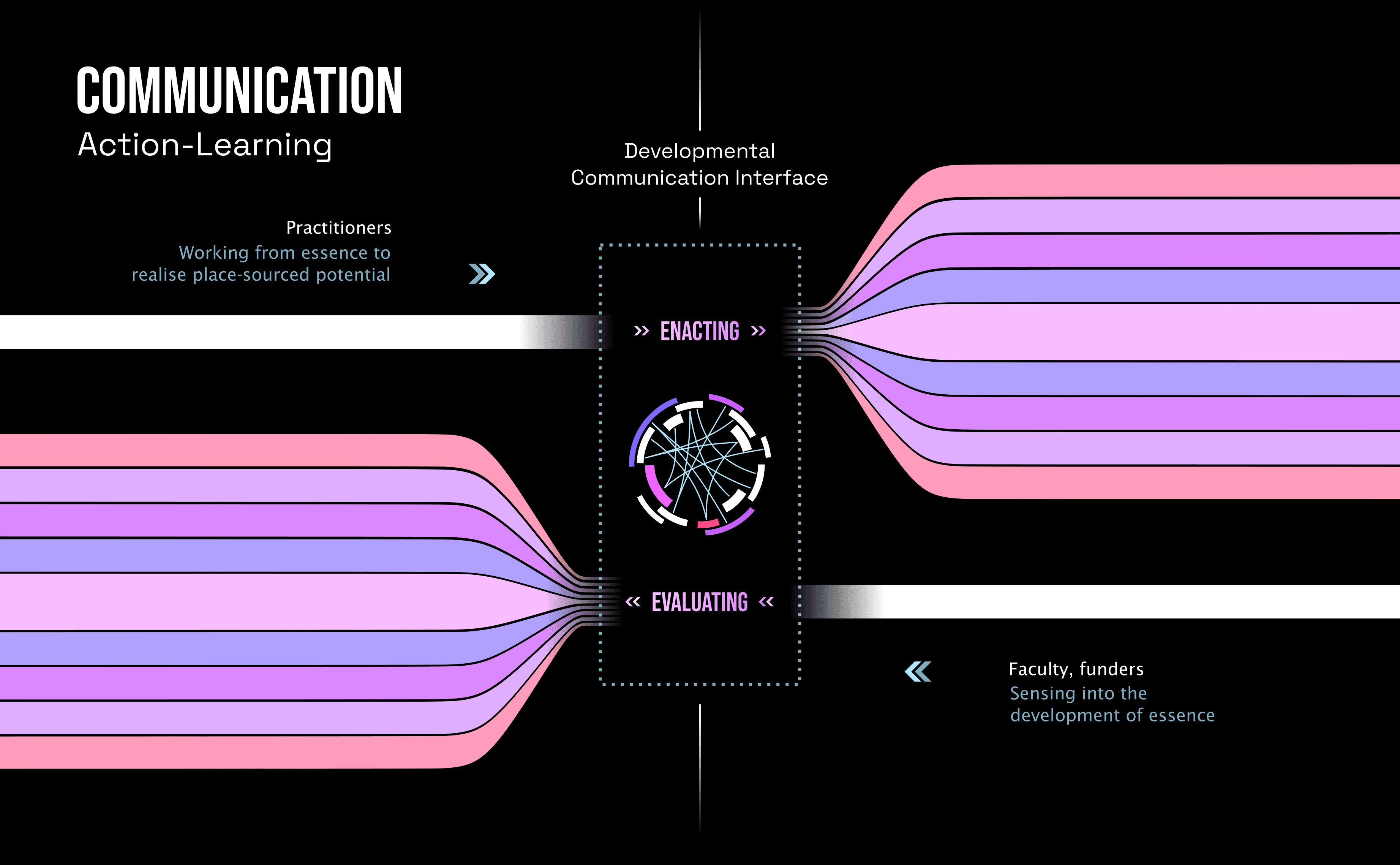each action-learning journey produces a story. this is a story about the application of practice on-the-ground among networks of real people and places. practice is applied to grow the capacity for evolution of these systems, so that they can work toward realising their potential and expressing their essence.
capacity-building can happen in many different dimensions. we call these dimensions aspects.1 below is a short list of examples…
- networking
- financing
- storytelling
- law relations
- land relations
- youth engagement
- impact assessment
- fooding
- health systems
each aspect makes visible one view into the application of practice on-the-ground. we make this visible with currencies. 2
each case-study therefore aims to utilise one or multiple practice-currencies. this dynamic interplay between action (practice) and learning (evaluation, aided by currency), is the essence of our work at prisma.
these currencies are the verified measurements that form the foundation for data-backed storytelling. all the additional media - meeting recordings, photos, audio notes, design documents - are (qualitative) layers of additional context that give wholeness to this underlying (quantitative, yet non-transactional) heartbeat.
- Curation - the most polished, and also the most abstracted. see prisma.events
- Archive - more complete, and also more raw and rugged. see docs.prisma.events
- Integrations - custom applications serving specific transformations. see evaluate.prisma.events and timelining
- Aspects - practice-currencies. lowest-level detail, leveraging accounts of peer-to-peer interactions

the purpose of enrolment and ground-potentialising, in the lead up to action-learning journey intensives, is for the whole system of place to become more visible, and for a place-sourced practice to be identified. these place-sourced practices are what animate the multi-stakeholder, multi-level enactment, gesturing toward potential-led, place-sourced economy.
Purpose
case-studies serve the purpose of show-casing the work on-the-ground to a broader audience:
- other practitioners who want to see practice being applied, to learn and integrate into how they apply practice in their own places
- external evaluators who are looking to resource meaningful work
case-studies are an interface into action-learning - real-time, with multiple perspectives. in this way, the case-study is in fact an ongoing storying of expression of essence of place. the potential we’re aiming for is for hubs to grow their self-publishing capabilities. prisma’s role as a distributed incubator is to on-board more hubs into a distributed system of self-organising action-learning journeys, each hub growing their capability over time to address higher orders of outcome aims.

Footnotes
-
aspect (n.): late 14c., an astrological term, “relative position of the planets as they appear from earth” (i.e., how they “look at” one another); also “one of the ways of viewing something,” from Latin aspectus “a seeing, looking at, sight, view; countenance; appearance,” from past participle of aspicere “to look at, look upon, behold; observe, examine,” figuratively “consider, ponder,” from ad “to” (see ad- ) + specere “to look” (from PIE root *spek- “to observe”). ↩
-
Currency as current-see . Current (adj.): flow. ↩